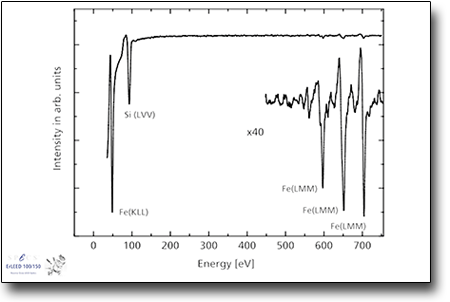Auger electron spectroscopy (AES) is a surface and element sensitive technique that utilizes a variable high-energy (1-5 KeV) electron beam as excitation source.
AES is based on the Auger effect, which consists in a series a of radiation less transitions in an atom in which one of its inner levels is ionized. This process ends by the ejection of an electron, which is known as an Auger electron whose kinetic energy is measured by an electron energy analyzer. Typically, the AES spectra are acquired in derivative mode using a lock-in technique to enhance the ratio signal/noise. This technique allows to determine the surface chemical composition both for qualitative and quantitative analysis. By following the AES transitions specific of an ad-layer and a given substrate it is possible to establish the growth mode, plotting, for instance, the AES signals as a function of deposition time, isochrone curves, or as a function of monolayer coverage of a desired deposited material.
AES@GasPhase AES@MBE AES@IPES AES@SAMOS AES@GPS AES@NANOSPECTR


 English (UK)
English (UK)  Italiano (Italia)
Italiano (Italia)